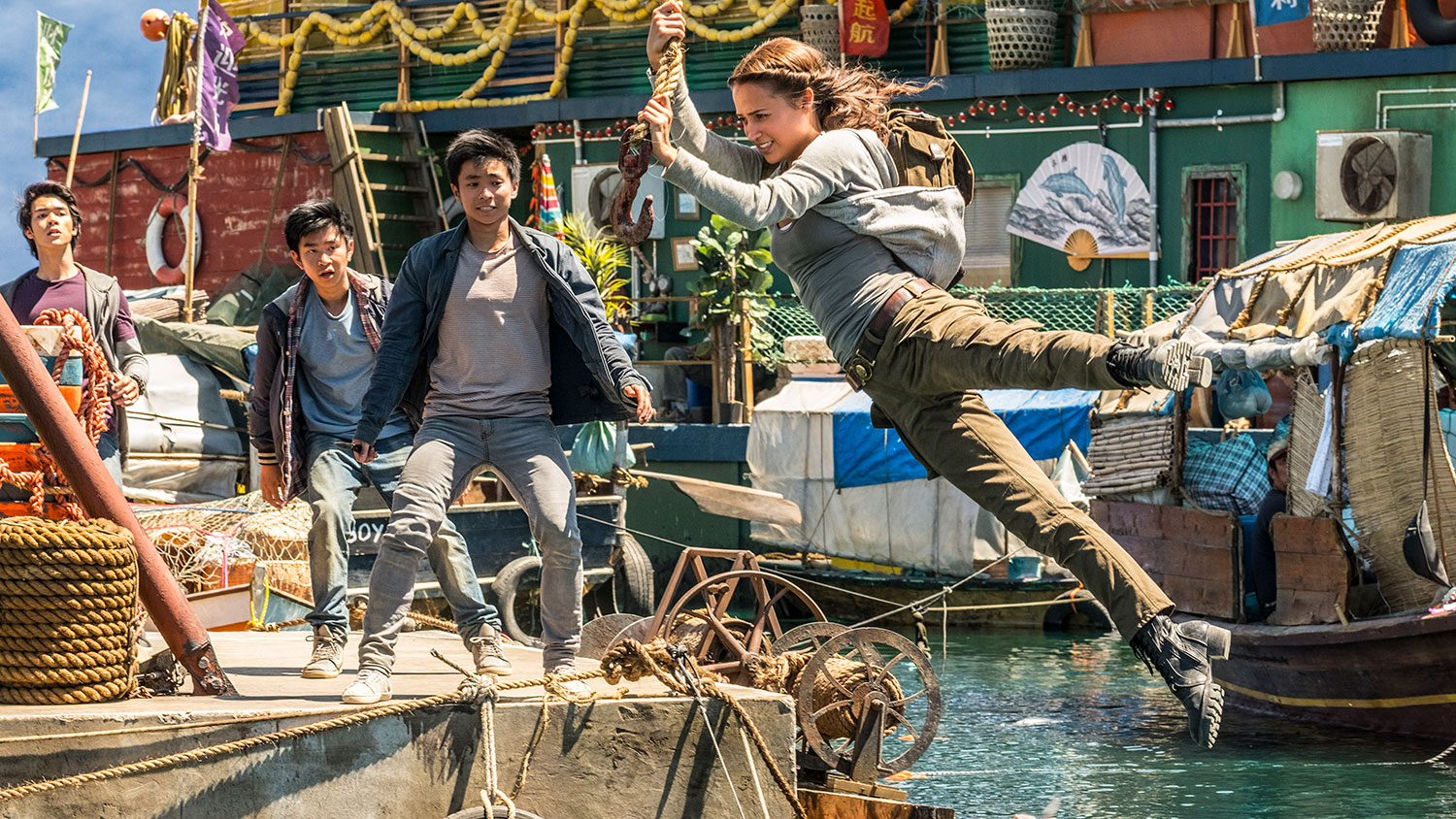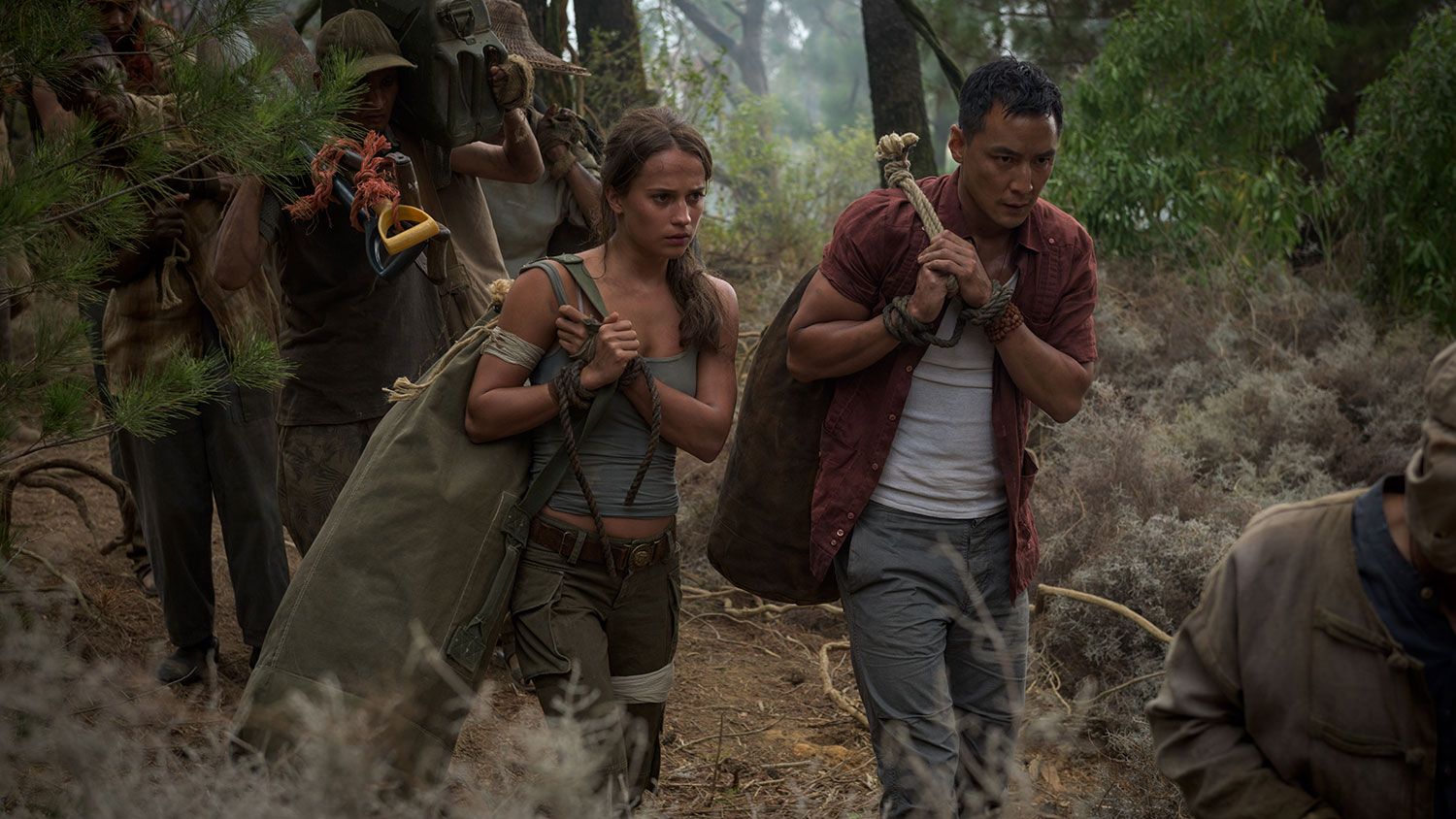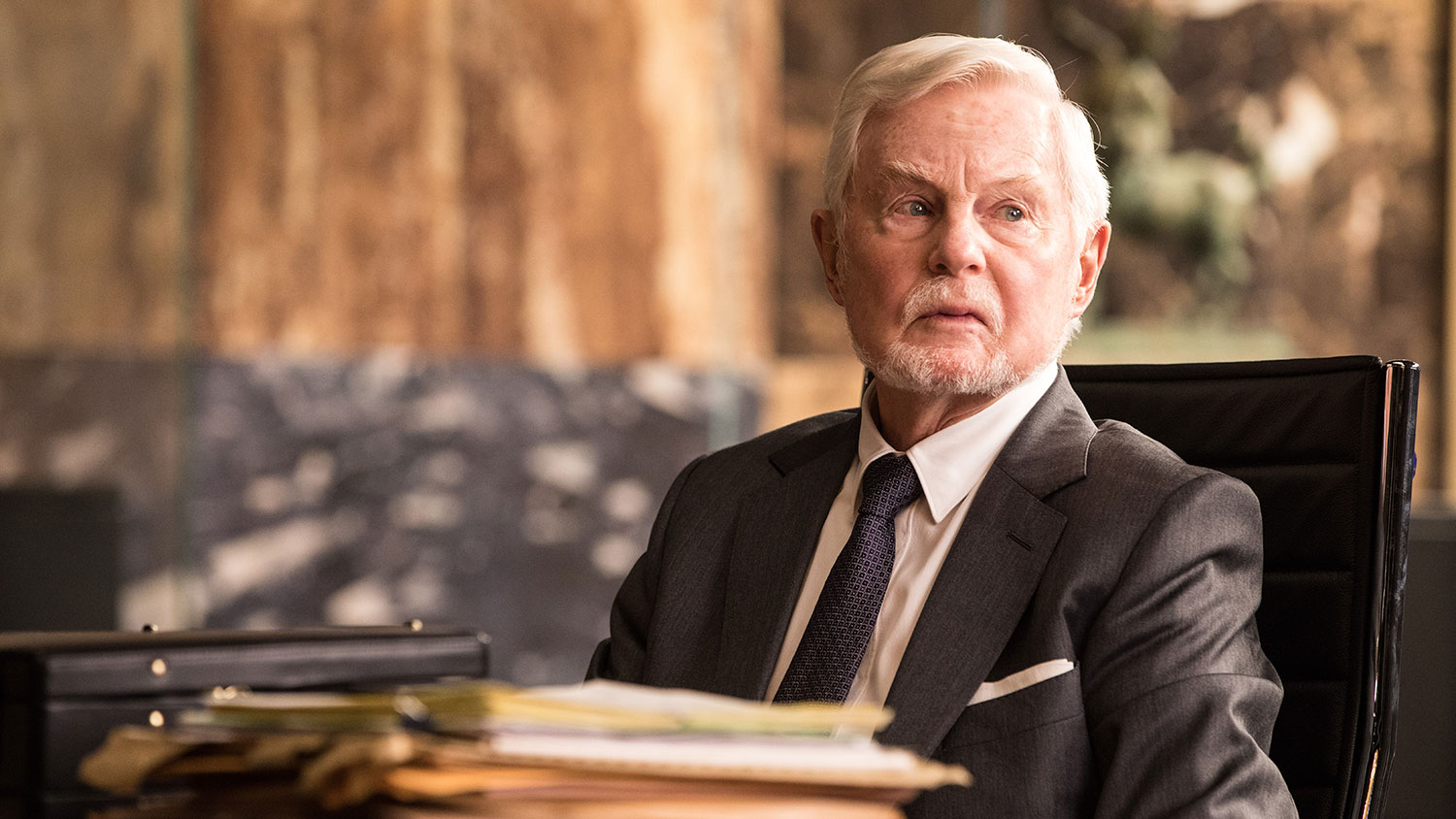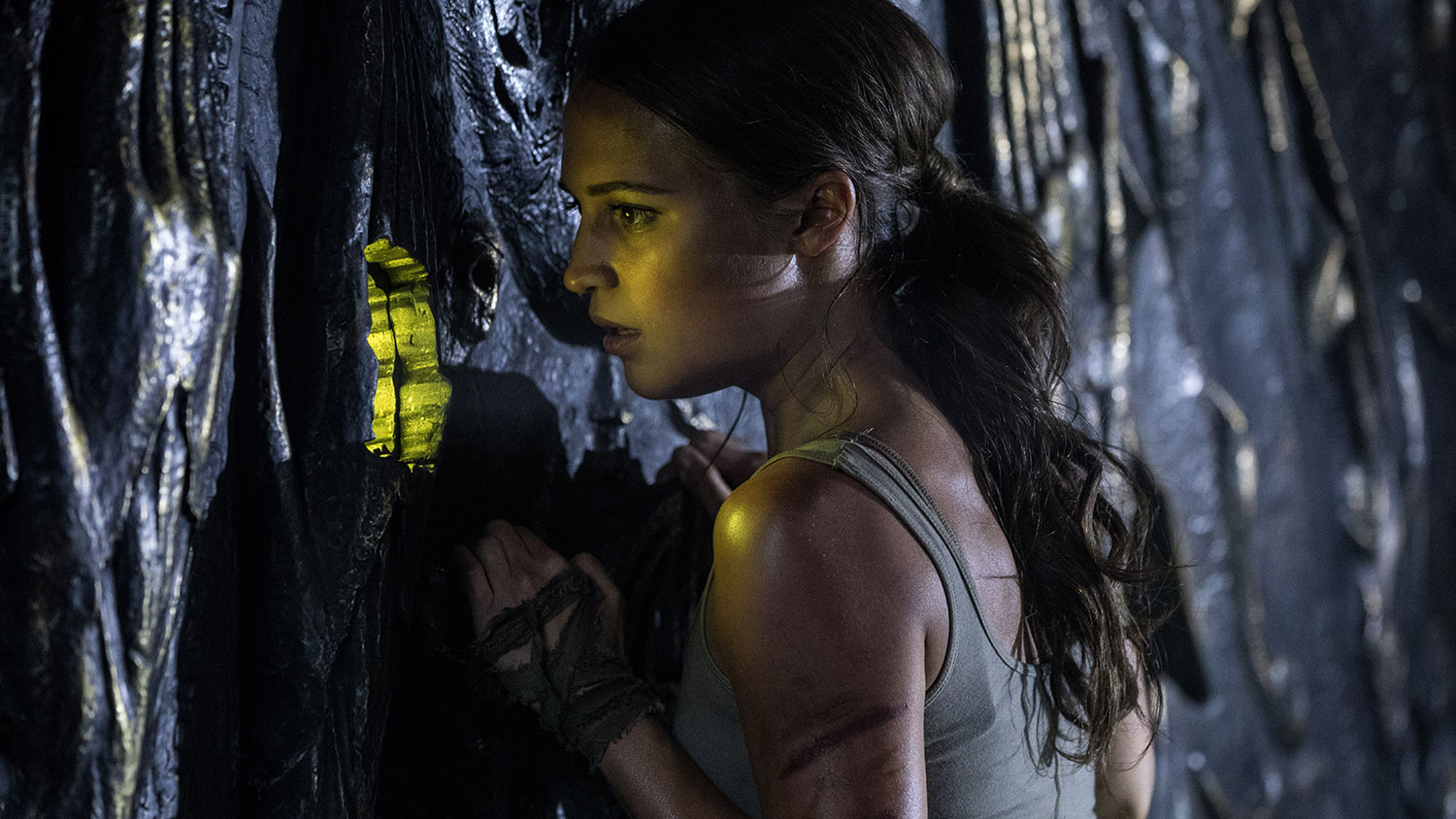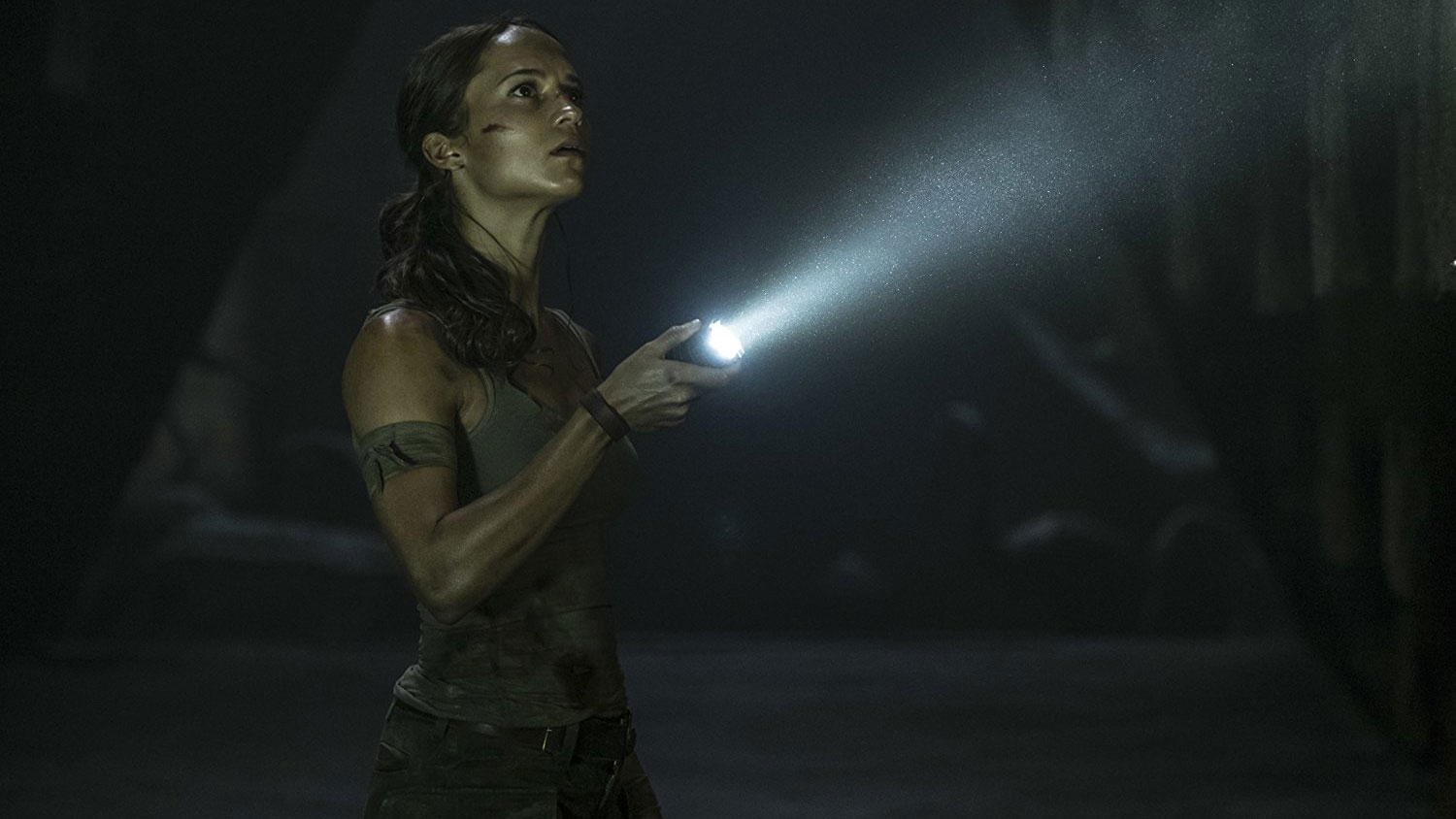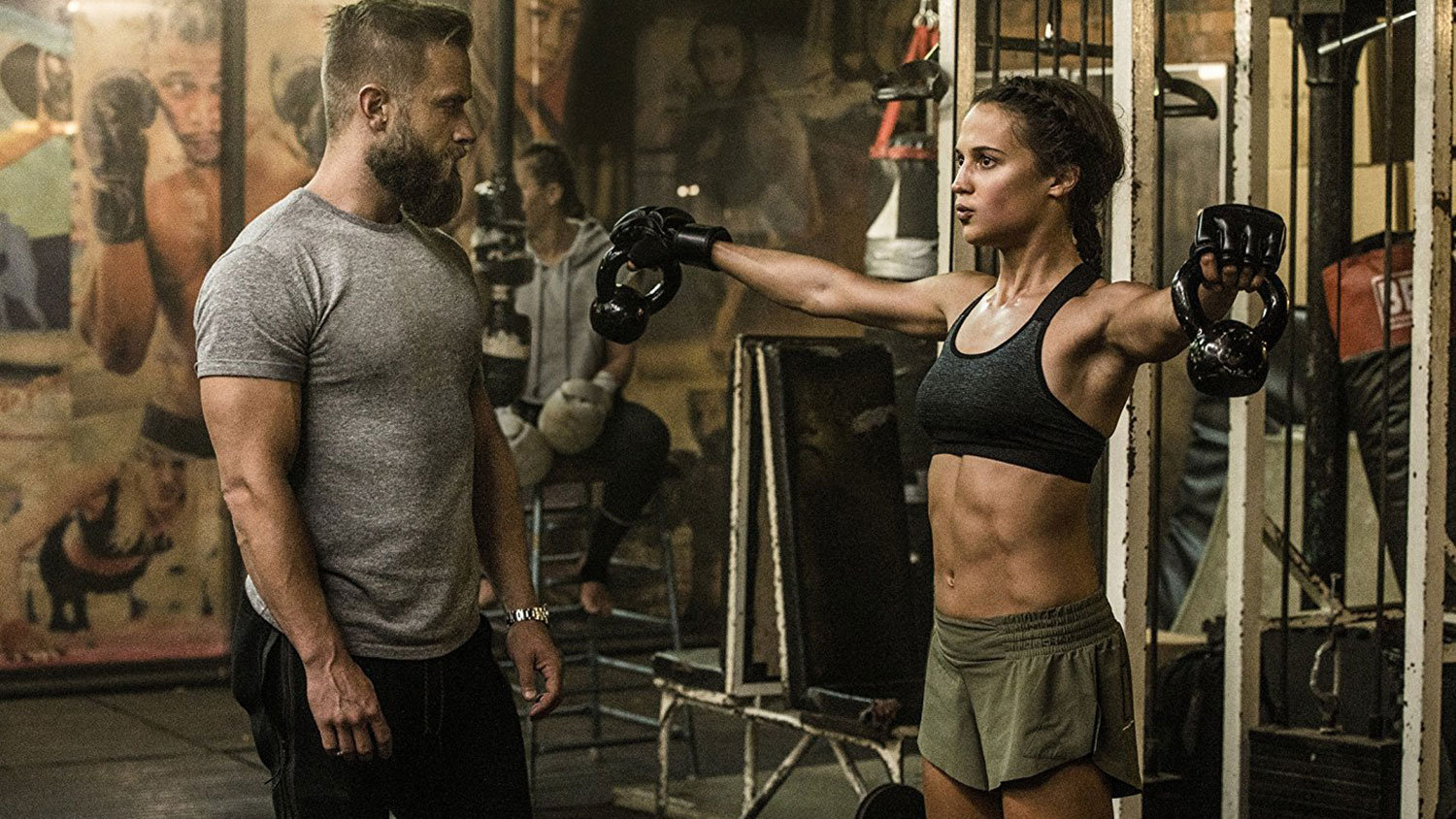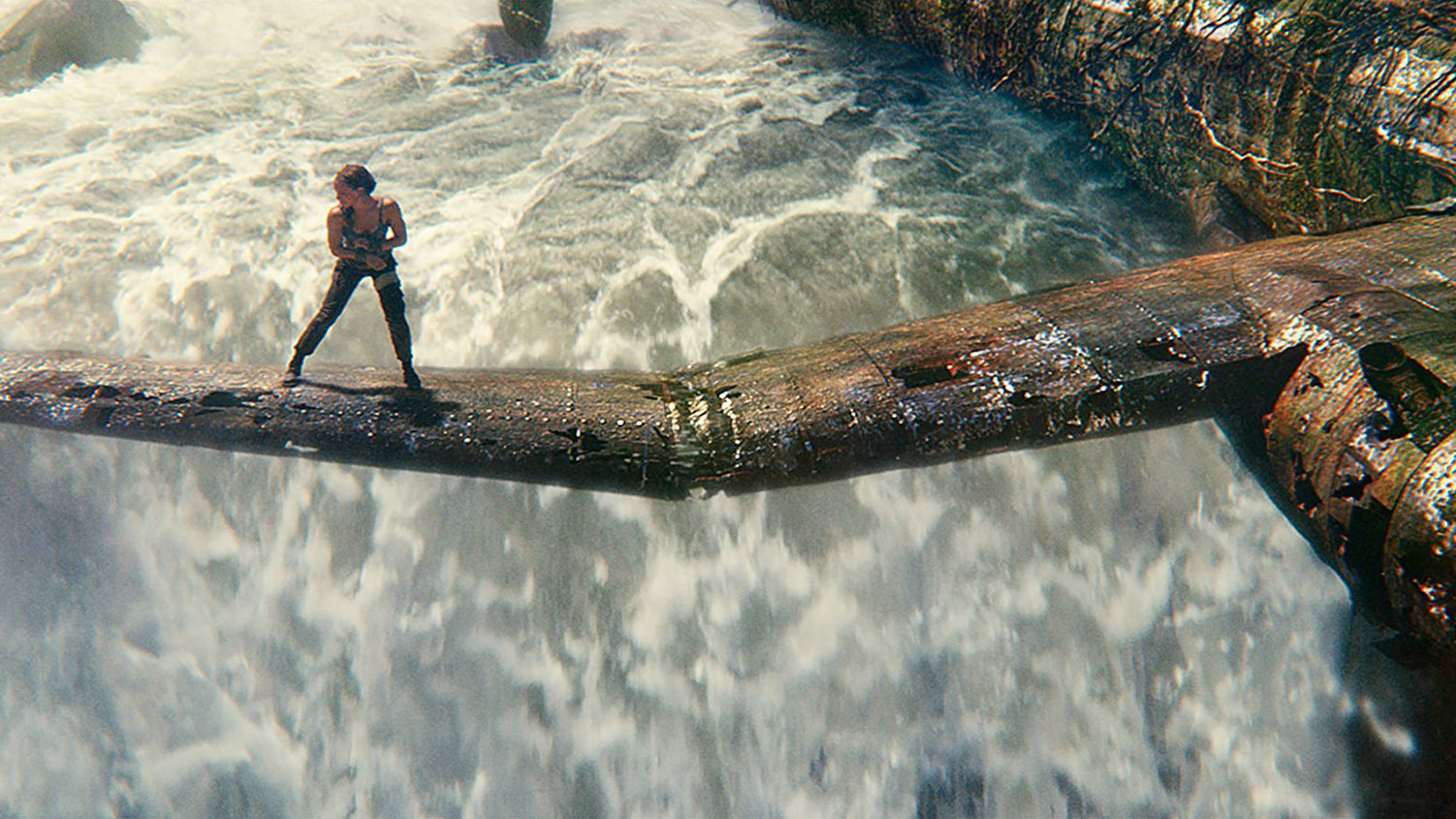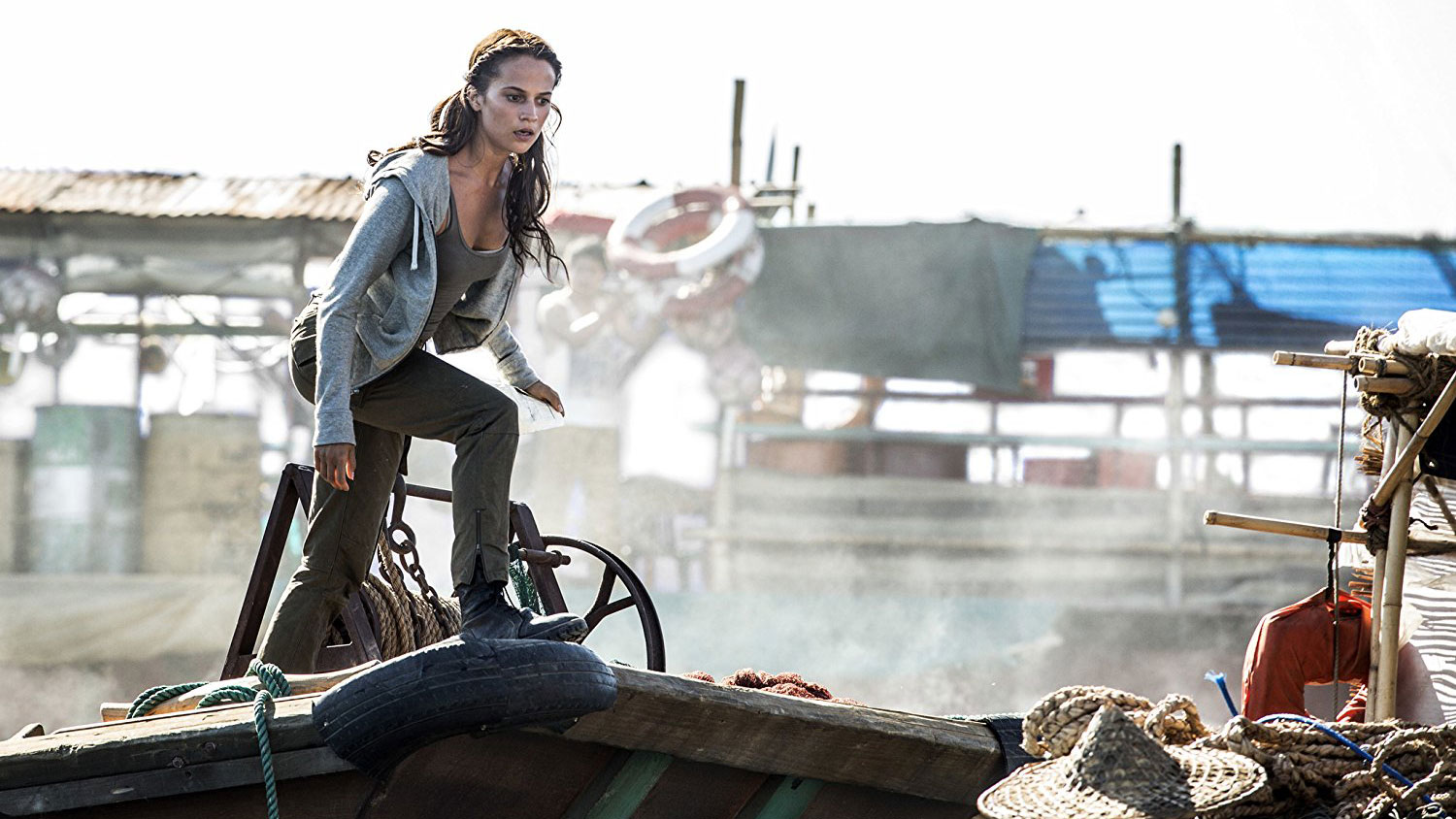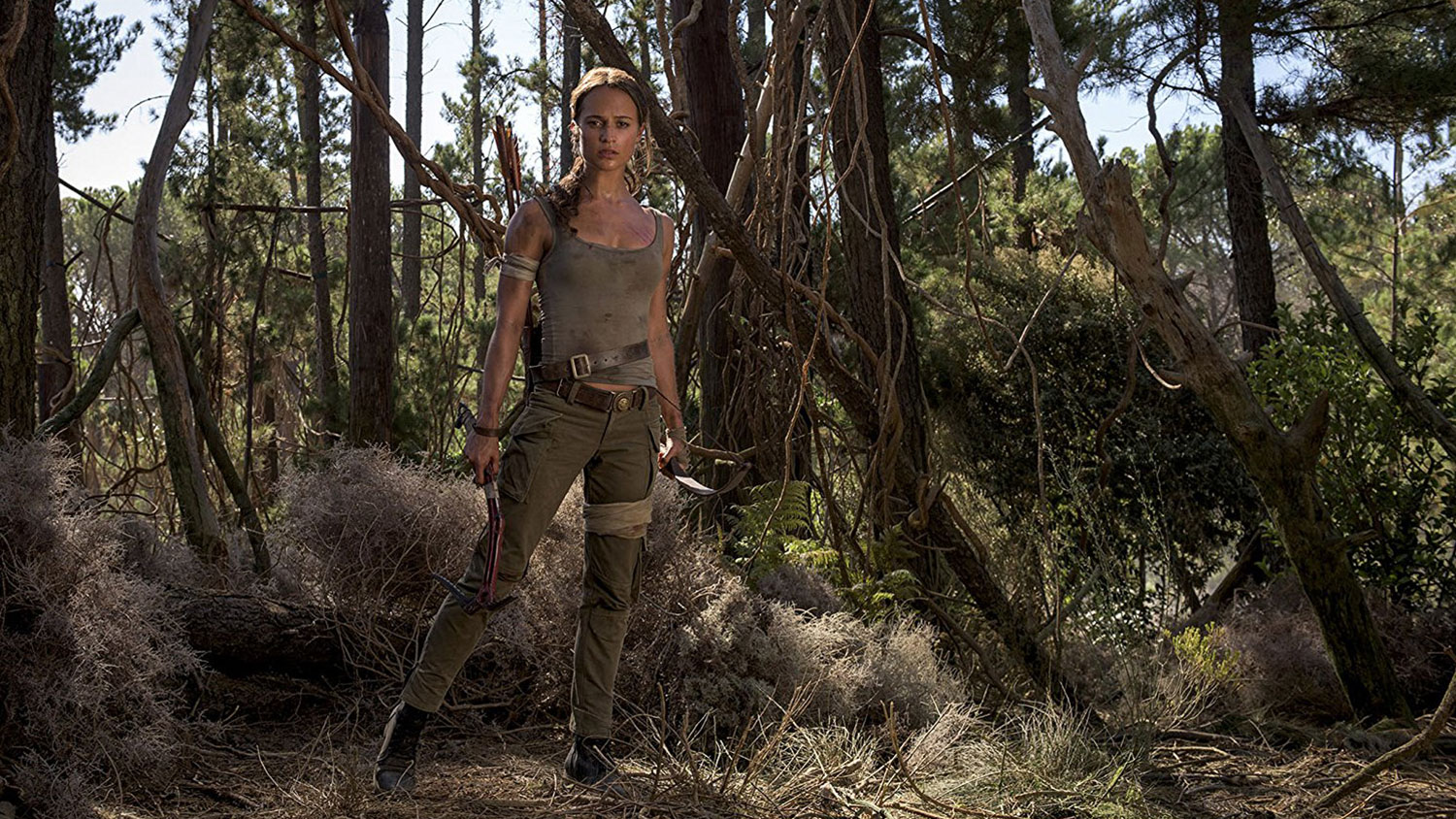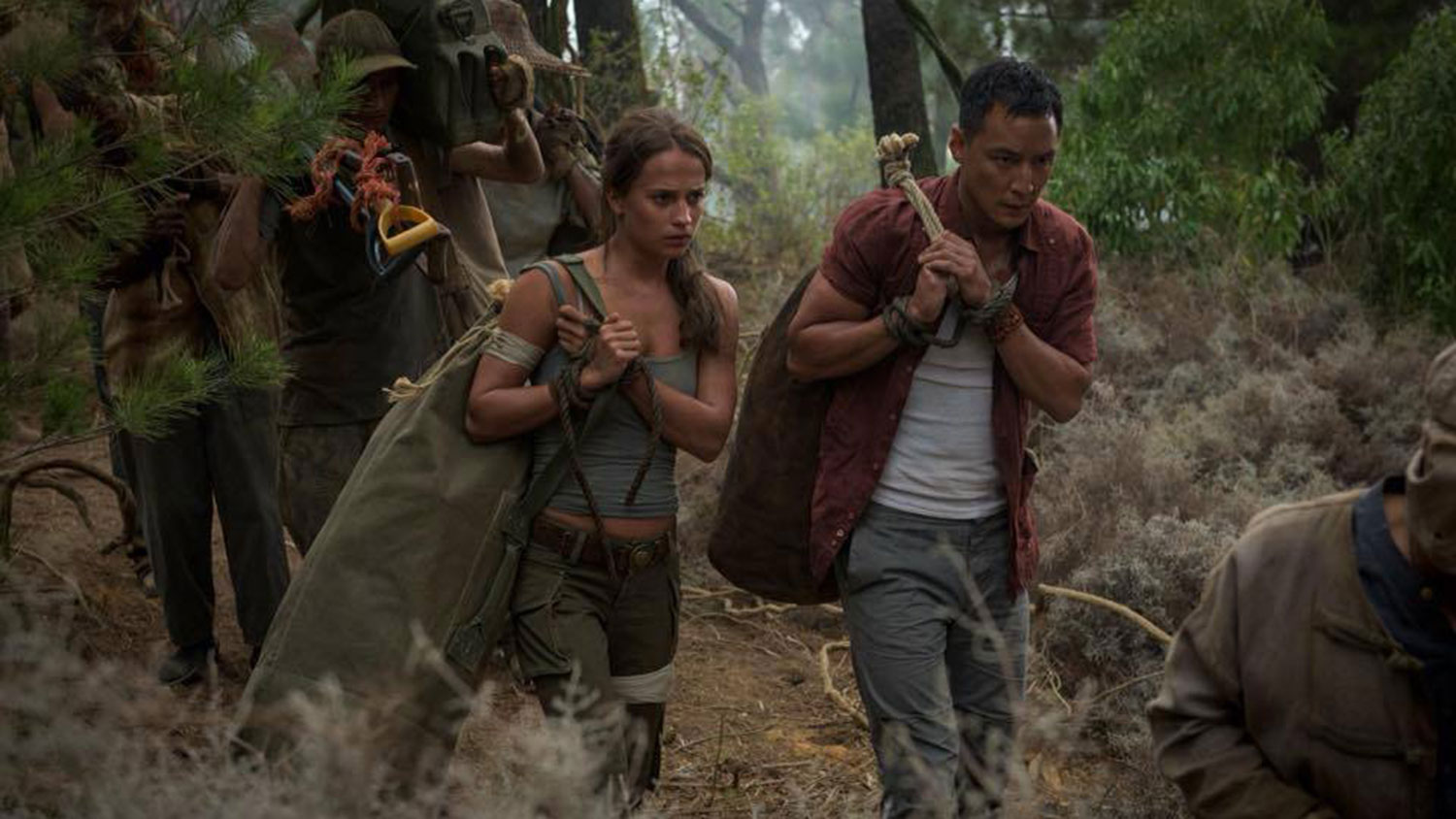Let’s get this out of the way straight off: Tomb Raider is not another terrible video game movie.
Norwegian director Roar Uthaug‘s adaptation of the 2013 video game of the same name, which itself is a reboot of the game franchise that once spawned a pair of silver screen adaptations starring Angelina Jolie, is a solid take on the source material. Like a good game, Tomb Raider is fast and exciting, clipping along between action sequences, and providing some solid thrills along the way.
Also like many games, Tomb Raider can be a thin, flighty experience. It’s fine enough while it’s going on, but it’s not something that’ll stick with you once the credits roll. Tomb Raider isn’t a terrible video game movie, but it’s not an amazing one, either.
Tomb Raider arrives on the screen already carrying some baggage. Just like the 2013 game, the movie brings a new take on protagonist Lara Croft — a character known for her busty physique in the early video games, which was slightly scaled down in Angelina Jolie’s second film as the gun-toting action hero.
Tomb Raider isn’t a terrible video game movie, but it’s not an amazing one, either.
The film kicks off by looking for a good reason to send its hero off on an adventure, although this version of Lara Croft (played by Alicia Vikander) seems pretty well on her way to being a badass before she ever makes it to her hellish ordeal. Tomb Raider finds Lara living alone in London, trying and failing to make her own way in the world.
It turns out, despite her insistence on living poor and struggling, Lara was a brilliant student and the sole heir of the Croft family fortune. She refused her promising future and the money that went with it, though, because taking it would mean declaring her missing father, Lord Richard Croft (Dominic West), legally dead.
Apparently you can’t just waffle on making that decision forever, because legal requirements force Lara to either deal with the paperwork or watch her inheritance and family home wind up in other hands. When she finally goes to sign the documents, she receives a puzzle box her father left her years earlier. In it is a message that eventually reveals Lord Richard had been using his archaeological know-how to chase paranormal legends — and might have been onto something.
The information Lara discovers gives her a roadmap to find out what fate her father ultimately met. Following his footsteps sends her to Hong Kong to find the boat captain her father hired to take him to Yamatai, a legendary island located off Japan. She meets the boat’s drunk captain, Lu Ren (Daniel Wu, who goes unfortunately underused for most of the movie), whose father vanished along with Lord Richard years before. The pair head off for Yamatai, and, as in the game, wind up shipwrecked on the island and in the hands of bad guys.
The biggest trouble of Tomb Raider is with Lara herself. Lord Richard’s disappearance was so traumatic it basically arrested Lara’s development in the film, and throughout the story it arrests her character development, too.
It’s rare that Lara has anything to say that’s not about or in some way related to her father — he’s her constant focus. Lara’s two main character traits are her drive to find out what happened to her dad, and her shredded abs.
It’s rare that Lara has anything to say that’s not about her father — he’s her constant focus.
Vikander, for her part, is more than capable of handling the movie’s physical demands. An early sequence in which she takes part in a bike race, deftly slipping in and out of London traffic, is a standout largely because it’s a fun way to suggest elements of Lara’s character, like a touch of stubborn arrogance that winds up subsumed by gloom and fatherly discussions later.
Vikander shows a lot of ability as an action star, climbing through a collapsing airplane wreck, or leaping from boat to boat in a Hong Kong harbor. Uthaug gives her plenty of things to run on, toward, and away from throughout the adventure. Vikander and the movie’s tense action sequences are what keep the whole Tomb Raider machine going.
Walton Goggins, who plays bad-guy leader Mathias Vogel, also helps carry the load of the movie’s plot, when otherwise more character development might have. As a man who’s been stuck on the shipwreck-laden island of Yamatai for years, searching for its ancient supernatural secrets at the behest of his bosses, he’s more than fed up with his lot.
Goggins manages to deliver cold cruelty, exasperation for his circumstances, and the occasional look of legitimate awe at the uncovering of ancient ruins with equal levels of believability. The movie provides him with just enough character to make it work — he’s an evil guy you can’t help wishing you knew a little more about.
It’s these underplayed elements that work in Tomb Raider, but which are too few and far between. When the film takes the simple approach, putting Lara in life-threatening situations and/or tasking her with fighting remorseless enemies, it becomes an exciting work of action that feels in step with the game it’s adapting, without being a slave to it.

Tomb Raider can’t quite get out of its own way, though, partially because it’s clearly concerned with making sure there’s ample setup from the game lore to fuel future sequels. The film slows to a crawl as it dumps a few long loads of exposition to explain that the bad guys are an Illuminati-like organization bent on world domination, or some such. Its excessive focus on Richard also operates more like a big nod to Tomb Raider franchise lore that hurts the ostensible story of Lara’s heroism.
Despite being a decent adaptation of the game for which it’s named, Tomb Raider struggles to stand on its own. Like the rebooted game that serves as its inspiration, this is a movie that had a chance to define a female heroine on her own terms, setting up a nuanced character who could carry a franchise. Tomb Raider flubs that opportunity, and that stops it from ever being really great or memorable.
It’s a fun enough tomb to raid, but there’s not much to discover inside.

